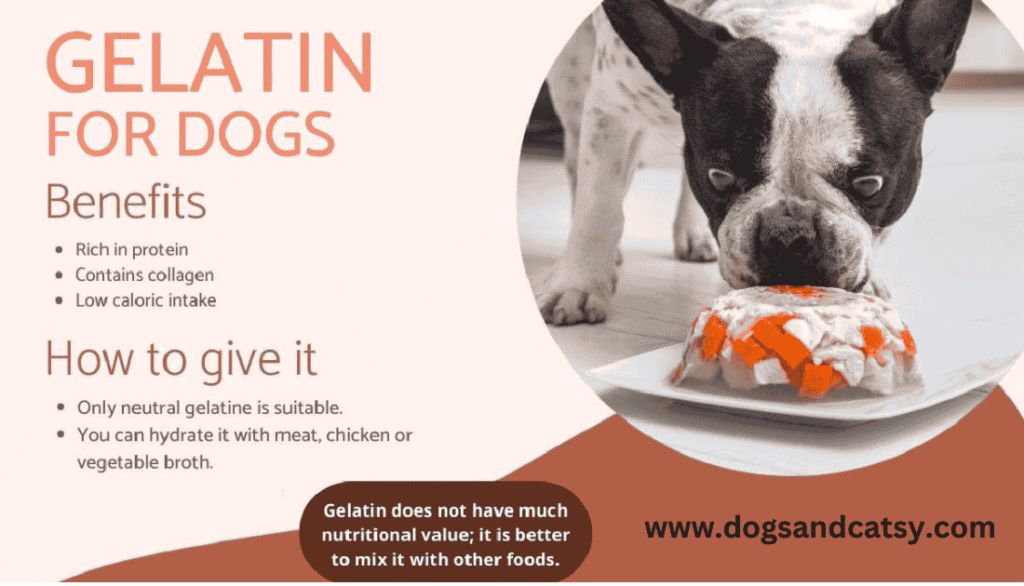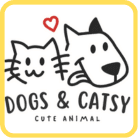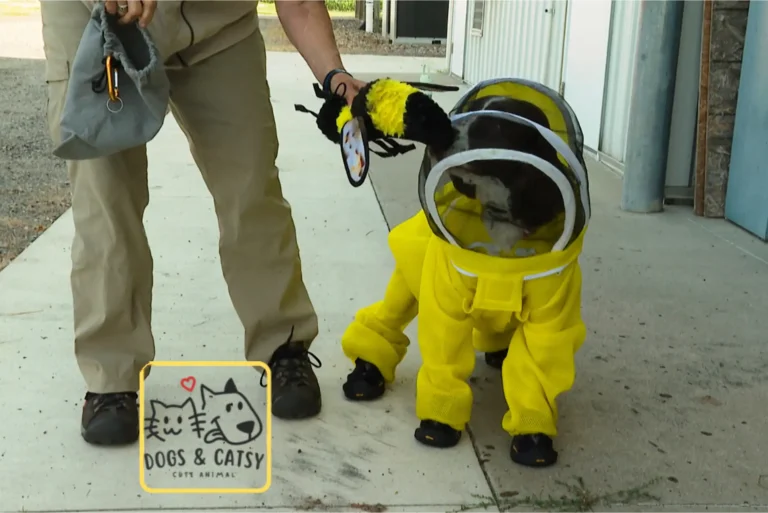Can Dogs Eat Jello? Dangers, Risks & Safe Alternatives

Many pet owners have seen those hopeful puppy eyes when enjoying a bowl of Jello. This bright, jiggly dessert is a favorite for people, and it’s easy to wonder if your dog can have a bite. Sharing snacks with a furry friend feels harmless, but can dogs eat Jello safely?
Let’s dive into the sweet truth and find out why that wobbly treat might not be the best choice for your pup.
Can Dogs Eat Jello
Dogs should not eat jello, especially jello shots, as these contain ingredients that can be harmful to them. While a small amount of plain Jello might not cause serious harm, it can still upset your dog’s digestive system and lead to discomfort. It’s always safest to consult your veterinarian if your dog consumes Jello to rule out any potential risks or complications.
What Exactly Is Jello Made Of?
A bright red Jello dessert may look tempting to share, but it’s not a safe dog treat.
Jello (often sold as Jell-O) is a popular dessert made from gelatin mixed with water, sugar, flavorings, and food coloring. Gelatin itself is a protein derived from animal collagen that creates the dessert’s signature wiggle.
Traditional Jello packs a lot of sugar to taste sweet. Some varieties use artificial sweeteners instead of sugar, especially the sugar-free flavors. Jello’s fun colors and fruity flavors come from added dyes and flavoring chemicals. In short, this dessert is basically gelatin plus a bunch of sweeteners and additives that make it taste like candy.
Also Read: Can Dogs Eat Okra?
Dogs are attracted to Jello’s sweet smell and taste. Our pets don’t know what’s inside that fruity gelatin dessert; they just know it smells yummy. If you’ve got a spoonful of strawberry or cherry Jello, your dog might sit at your feet, drooling for a taste.
It’s important to understand what’s in Jello before thinking about sharing it. The ingredients that make Jello delicious for us might be trouble for your canine companion.
Is Jello Safe for Dogs to Eat?
The big question is whether a little Jello is harmless or harmful for your dog. Regular Jello (the kind with sugar) and sugar-free Jello both pose risks to dogs. While a tiny lick of plain gelatin won’t poison your pup, the additives in flavored Jello make it a bad choice for dogs. Here’s why feeding Jello to dogs is generally unsafe:
- High Sugar Content: Jello is loaded with sugar. Dogs that eat sugary foods can gain weight quickly. Too much sugar leads to obesity in pets, which puts stress on their joints and heart. Sugar also causes tooth decay and can contribute to canine diabetes over time. Even a little Jello is giving your dog a spoonful of sugar, which their body doesn’t need.
- Artificial Sweeteners: Many “light” or sugar-free Jello products contain artificial sweeteners. The most dangerous one is xylitol, an ingredient that is extremely toxic to dogs. Even a small amount of xylitol can cause a dog’s blood sugar to drop to life-threatening levels and may lead to liver failure.
- Not all sugar-free Jello brands use xylitol (some use aspartame or sucralose), but you must check labels carefully. It’s safest to avoid giving any sweetened human desserts to dogs because of this risk.
- Artificial Flavors and Colors: Jello’s bright colors and candy-like flavors come from chemicals that don’t benefit your dog. While these additives are not immediately poisonous, they can upset some dogs’ digestive systems.
- Your pup might experience vomiting or diarrhea after eating weird ingredients their belly isn’t used to. In general, dogs have sensitive stomachs when it comes to rich, sugary human foods.
- Toxic Fruit Ingredients: Some Jello desserts or gelatin snacks include pieces of fruit or use fruit juice for flavor. Be careful—grapes (and their juice) are toxic to dogs, and Jello comes in grape flavor. Other add-ins like raisins or certain nuts can be dangerous as well.
- A snack pack Jello cup with mixed fruit might contain something unsafe for dogs. It’s hard to know every ingredient, so it’s best to keep all flavored gelatin snacks away from your pet.
Quick Look: Jello Ingredients and Dog Safety
To better understand the issue, here’s a simple breakdown of Jello’s components and whether they are okay for your dog:
| Ingredient in Jello | Is it safe for dogs? |
|---|---|
| No, too much sugar can cause weight gain, tooth decay, and diabetes in dogs. | Yes – plain gelatin is generally safe and even beneficial in moderation. |
| Sugar | No – too much sugar can cause weight gain, tooth decay, and diabetes in dogs. |
| Xylitol (sweetener) | No. Xylitol is extremely toxic; even a little can be deadly to dogs. |
| Artificial flavors/colors | Not really. Additives can upset your dog’s stomach and have no nutritional value. |
| Fruit add-ins (grapes, etc) | Depends. Some fruits (like grapes) are toxic; others might be safe in small amounts. |
Experience Speaks Louder than Words
You don’t have to take just our word for it. Veterinarians and pet experts strongly warn against giving Jello to dogs. As a long-time dog owner, I once wondered if a little Jello treat could be fun for my pup. I tried offering a small, plain gelatin cube (with no added sugar or flavor) as an experiment.
My dog licked it up and seemed to enjoy the texture, but that experience taught me an important lesson: it’s not the gelatin that’s the problem; it’s everything else in Jello.
Also Read: A Complete Pet’s Guide
My Experience with Jello
Many pet owners have stories of their dogs stealing a cupcake or licking some spilled Jello off the floor. My own experience with a sneaky pup taught me how even small amounts of human sweets can lead to an upset stomach.
Dogs don’t understand what foods are safe. It’s our job as pet parents to be careful. Seeing my dog feel sick after too much birthday cake once was enough to convince me to keep sugary treats out of reach.
Vet’s Take on Jello
Veterinarians have seen what happens when dogs eat the wrong things. They have the medical knowledge and expertise to know that ingredients like sugar and xylitol can harm a dog’s body.
According to vet guidance, desserts like Jello offer zero nutritional benefit to dogs and carry plenty of risk. A vet will tell you that a dog’s digestive system isn’t built for processed sweets. Their professional advice is clear: avoid feeding Jello or sugary human snacks to your dog.
Authorities Take on Jello
Trusted organizations and pet health authorities echo this warning. Animal poison control centers list xylitol as a common deadly poison for dogs. The American Kennel Club and other authoritative pet guides advise sticking to dog-specific treats.
When authoritative voices all agree that something is unsafe, it’s wise to listen. The consensus builds trust that we’re making the right choice by keeping Jello away from our pets.
You can Trust me as A Dog Owner
As a responsible dog owner writing this, I want you to have trustworthy information. You can trust this advice because it’s based on real experiences and vet-approved knowledge. Keeping your dog safe is the top priority. When in doubt about a food like Jello, it’s best to err on the side of caution and choose a safer treat.
Always feel free to consult your own veterinarian for guidance. This shows you’re a caring and informed pet parent. In the end, protecting your pup’s health will strengthen the trust between you and your furry friend.
Also Read: Why My Dog is Chewing Its Tail?
Can Dogs Eat Plain Gelatin Instead?
Dogs can eat plain gelatin safely in small amounts. Just remember that plain gelatin is very different from the sugary Jello desserts sold for humans.
We know that flavored Jello with sugars and sweeteners is off-limits. But what about plain gelatin itself? Gelatin is the ingredient that makes Jello solidify, and on its own, gelatin is not toxic to dogs. In fact, unflavored, unsweetened gelatin can have some health benefits for dogs when given in moderation.
Plain gelatin is cooked collagen, which is a protein that can support healthy fur, skin, and joints. Some dog treats and supplements use gelatin for these reasons.

For example, gelatin contains amino acids that may help a dog’s joint health and digestion. Sprinkling a small amount of plain gelatin powder on your dog’s food or giving them a veterinarian-approved gelatin supplement might even be beneficial.
However, moderation is key. A large amount of any new protein, including gelatin, could upset your dog’s stomach if they’re not used to it. And gelatin by itself has no flavor, so your dog might not even find plain jiggly gel very interesting!
If you want to try gelatin for your dog, it’s best to use unflavored gelatin and mix it with something dog-friendly. For instance, some owners make a simple jelly treat for dogs by mixing plain gelatin with a bit of low-sodium chicken broth or peanut butter. This creates a gummy dog treat without the harmful sugar. Always ensure any add-ins are safe (for example, use xylitol-free peanut butter).
Safe Treat Alternatives to Jello
Your pup might be eyeing your dessert, but you can offer healthier options that they’ll love just as much. Instead of giving your dog Jello, consider some of these safe treat alternatives:
- Fresh Fruit: Try dog-safe fruits like blueberries or apple slices (with no seeds). They are sweet but also provide vitamins and fiber. Many dogs love the natural sweetness of fruits, and you don’t have to worry about artificial additives.
- Vegetables: Small baby carrots or cucumber slices can be crunchy, fun treats. They are low in calories and safe for dogs to snack on. The texture is different from Jello, but some dogs enjoy the crisp bite.
- Dog Treats or Gummies: Pet stores sell canine treats that are formulated for dogs’ health. Some even have gelatin-based dog gummies made just for pups, containing beneficial ingredients and no harmful sugars. These can satisfy your desire to give your dog a “jelly” treat without risking their health.
- Homemade Gelatin Treat: If you’re set on a jiggly treat, you can make a homemade dog-friendly gelatin snack. Use unflavored gelatin and mix in dog-safe flavors (like a little bit of pureed strawberry or some chicken broth). Pour it into small molds and let it set. This way, your dog gets the fun of a wobbly treat with none of the dangerous sugar or sweeteners.
Also Read: Why Is My Dog Sneezing a Lot?
Frequently Asked Questions (FAQs)
Can dogs eat a little Jello?
Even a little Jello isn’t a great idea for dogs. A tiny taste likely won’t be fatal if it doesn’t contain xylitol, but the sugar and additives can still upset your dog’s stomach. It’s best to avoid giving Jello at all, even in small amounts.
Is gelatin toxic to dogs?
Plain gelatin is not toxic to dogs. In fact, unflavored gelatin can be beneficial for joints and digestion in moderation. It’s the sugars, flavors, and especially xylitol in flavored Jello products that are harmful to dogs, not the gelatin itself.
Can dogs have Snack Pack Jello?
No. Snack Pack Jello cups (and similar pre-made gelatin snacks) contain lots of sugar or artificial sweeteners. They are not safe for dogs to eat. It’s better to give your dog treats specifically made for pets instead of Snack Pack desserts.
Does Jell-O contain xylitol?
Regular Jell-O gelatin desserts typically use sugar, not xylitol. However, some sugar-free Jell-O or off-brand gelatin mixes might use xylitol or other sweeteners. Always check the ingredient list. Since xylitol is extremely toxic to dogs, it’s safest to keep all types of Jello away from pets.
What should I do if my dog accidentally eats Jello?
If your dog sneaks a bit of Jello, stay calm and check what kind it was. Sugar-free Jello or any gelatin dessert containing xylitol is an emergency – contact a vet immediately. If it were regular sugary Jello without any known toxic ingredients, observe your dog for any vomiting, diarrhea, or unusual behavior.
Provide plenty of fresh water and a bland meal later if they seem a little sick. When in doubt, a quick call to your veterinarian is always the safest move to ensure your dog stays healthy.






